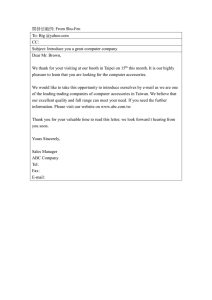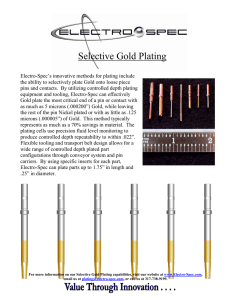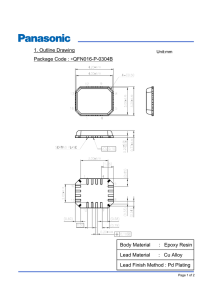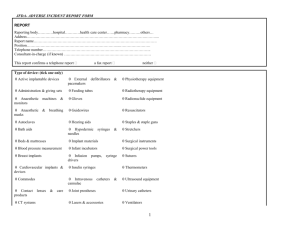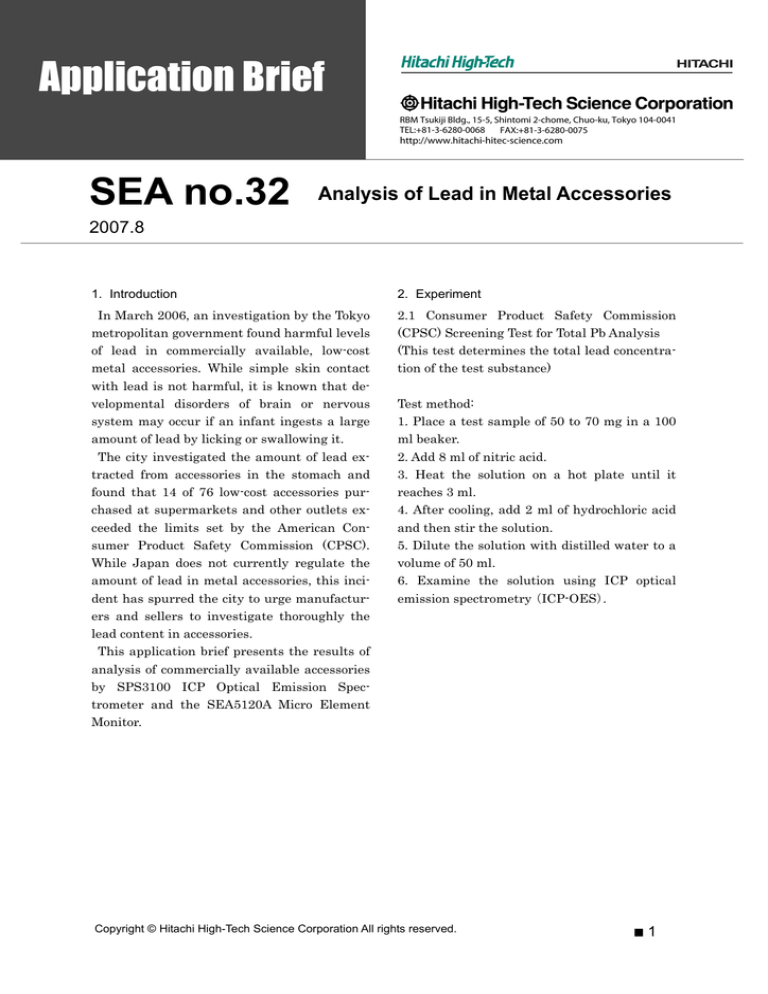
SEA no.32
Analysis of Lead in Metal Accessories
2007.8
1. Introduction
2. Experiment
In March 2006, an investigation by the Tokyo
metropolitan government found harmful levels
of lead in commercially available, low-cost
metal accessories. While simple skin contact
with lead is not harmful, it is known that developmental disorders of brain or nervous
system may occur if an infant ingests a large
amount of lead by licking or swallowing it.
The city investigated the amount of lead extracted from accessories in the stomach and
found that 14 of 76 low-cost accessories purchased at supermarkets and other outlets exceeded the limits set by the American Consumer Product Safety Commission (CPSC).
While Japan does not currently regulate the
amount of lead in metal accessories, this incident has spurred the city to urge manufacturers and sellers to investigate thoroughly the
lead content in accessories.
This application brief presents the results of
analysis of commercially available accessories
by SPS3100 ICP Optical Emission Spectrometer and the SEA5120A Micro Element
Monitor.
2.1 Consumer Product Safety Commission
(CPSC) Screening Test for Total Pb Analysis
(This test determines the total lead concentration of the test substance)
Test method:
1. Place a test sample of 50 to 70 mg in a 100
ml beaker.
2. Add 8 ml of nitric acid.
3. Heat the solution on a hot plate until it
reaches 3 ml.
4. After cooling, add 2 ml of hydrochloric acid
and then stir the solution.
5. Dilute the solution with distilled water to a
volume of 50 ml.
6. Examine the solution using ICP optical
emission spectrometry (ICP-OES).
Copyright © Hitachi High-Tech Science Corporation All rights reserved.
■1
2.2 CPSC Acid Extraction Test
(This test determines the amount of lead that
is extracted from the test substance after it is
placed in a gastric acid-like solution.)
Test method:
1. Measure the mass of the test sample.
2. Suspend the test sample in a beaker using a
PTFE tube.
3. Add 0.07 mol/l hydrochloric acid. The acid
solution should be equivalent to 50 times the
weight of the test sample.
4. Heat the container to 37° C.
5. Stir the solution for 1 hour.
6. Move the sample from the beaker to a
separate plastic container.
7. Add the 0.07 mol/l hydrochloric acid.
8. Stir the solution for 2 hours.
9. Move the sample from the beaker to a
separate plastic container.
10. Add the 0.07 mol/l hydrochloric acid.
11. Stir the solution for 3 hours.
12. Individually analyze the resulting three
solutions using ICP-OES.
1
2
3
4
Before
After
dissolution
dissolution
5
3. Results
3.1 Lead Content in Accessories
[Comparison of lead content]
ICP-OES was used to measure the completely
dissolved items and fluorescent X-rays were
used to measure the plating and filed area.
Micro Element
Monitor 5120A
ICP-OES
SPS3100
Lead content (%)
1. Plating
4. Plating
5. Filed
before
after disarea
dissolution
solution
2.9
15.4
87.4
83.1
The results above suggest that as the plating
melts, the lead under the plating is detected,
which increases the lead content results. The
ICP-OES results of the completely dissolved
test samples and the results of the X-ray fluorescence analysis of the filed area were roughly
the same.
The diagram below shows the measurement
results from the SEA5120A Micro Element
Monitor of the filed areas and plating. As can
be seen, the fluorescent X-ray intensity of the
plating is much lower than the intensity of the
filed area.
Filed area
After filing
Plating
Copyright © Hitachi High-Tech Science Corporation All rights reserved.
■2
3.2 Lead Extraction Test
[Comparison of measurement values]
The concentrations of the lead in the solutions
(1, 2 and 3 hours) from the acid extraction test
were measured using ICP-OES.
1hr
2hr
3hr
Mass of extracted lead (ppm)
0.010
0.013
0.019
The results above show that very little of lead
leached out, even when the accessory was
suspended in a gastric acid-like solution for 3
hours.
4. Conclusion
The lead content in metal accessories was
measured using the SEA5120A Micro Element
Monitor and SPS3100 ICP emission spectrometer. The results revealed that a very
minute amount of lead leached out during the
CPSC acid extraction test, which simulates
ingestion. However, a high lead concentration
(approximately 85%) was found when the lead
content of the entire sample was measured.
This suggests that if the sample were
scratched, lead could leak out and cause severe
harm.
Since very little pre-processing is necessary,
X-ray fluorescence spectrometry is effective for
performing quick measurements during the
analysis of a large number of test substances.
X-ray fluorescence spectrometer can measure
target elements after simple pre-processing so
they are well suited for RoHS element analysis
involving a large number of test substances.
Copyright © Hitachi High-Tech Science Corporation All rights reserved.
■3

